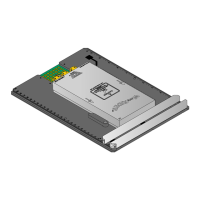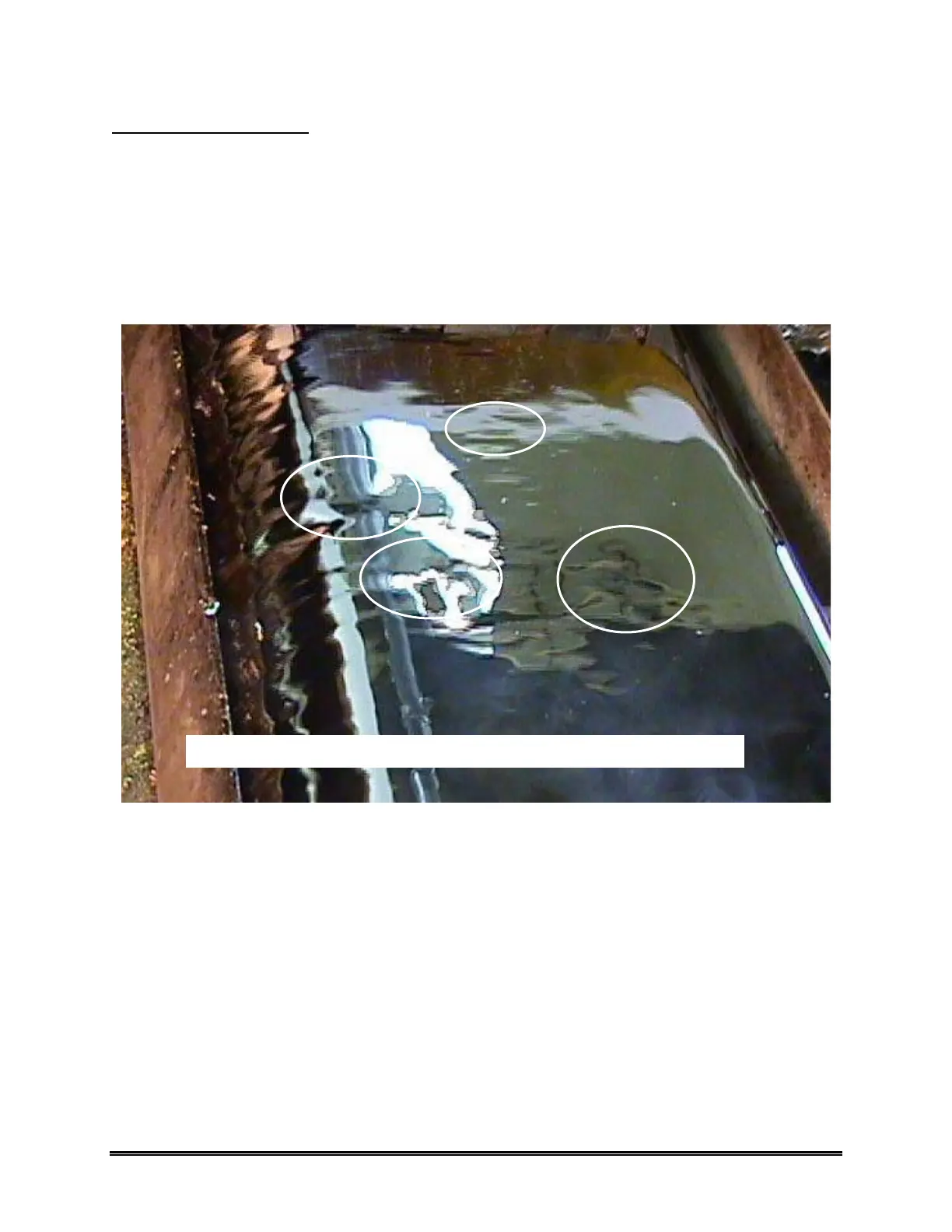186 WaveRIDER
Solder Wave Variation
Solder wave variation happens. It is by nature a dynamic process caused by the
pumping of a liquid. Through various channels, weirs, rudders, and nozzles, all
designed to balance flow across the surface of the wave, liquid solder makes its way to
the surface and finally breaks one way or the other depending on the wave shape.
Lacking the presence of a printed circuit board, this wave looks even and more or less
smooth on typical wave solder machines. However, some ripples and eddies are visible
as the flow of solder moves toward the spill point. These ripples are everywhere and
only some of the bigger ones are pointed out in the picture below.
Figure C-8: Solder Wave Ripples
Currents running throughout the wave take on a whole new manifestation when they run
into the underside of a printed circuit board. They will cause the crest of the wave to
vary, much like ocean waves as run up a sandy beach. An ocean wave will never rush
up the sand and stop in a perfectly straight line even though the beach may be very flat.
Thus the crest of the solder wave, as it flows against the underside of a printed circuit
board, will be very dynamic. You can view this using a tempered glass plate, such as
the one called “Lev Cheek” by Hexacon Electric, as it runs slowly across the solder
wave just like you would solder a printed circuit board. A typical solder wave using this
glass plate is pictured below.
Typical Ripples and Currents that appear on otherwise smooth looking waves

